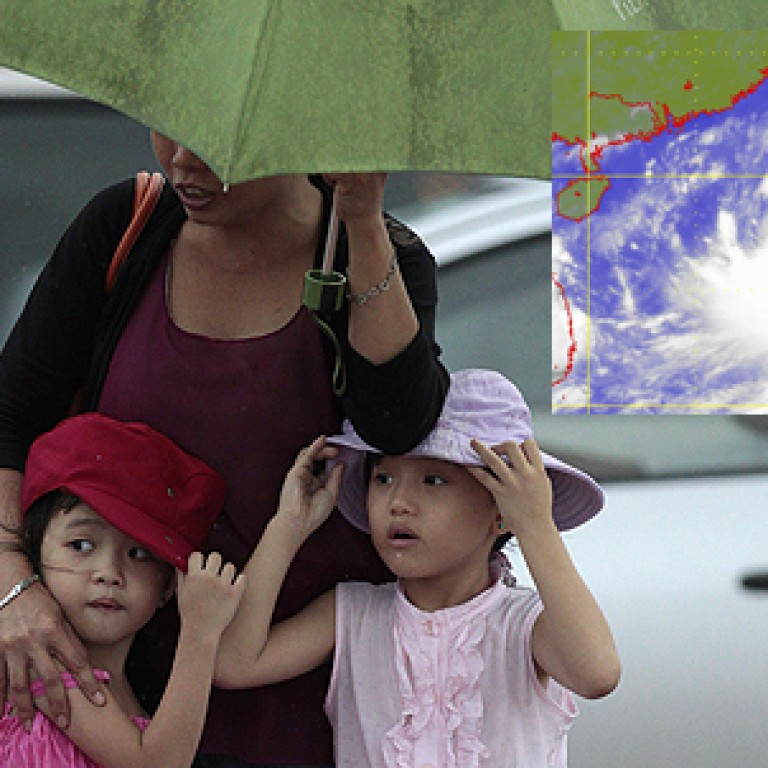
Hong Kong Observatory raises No 1 signal as Typhoon Utor batters Philippines
45 fishermen missing in Philippines, one killed in landslide
The Hong Kong Observatory raised the Strong Wind Signal No 1 at 4.05pm on Monday as the Severe Typhoon Utor battered its way through the northern Philippines on Monday.
At 4pm, Utor was centred about 400 kilometres south-southeast of Dongsha. It is forecast to move west-northwest at about 22km per hour across the central part of the South China Sea, in the general direction of the western coast of Guangdong
Utor on Monday hit the northern Philippines, toppling power lines and dumping heavy rains across mountains, cities and food-growing plains. The storm killed at least one man in a landslide and left 45 fishermen missing.
Utor, described as the strongest globally so far this year, slammed ashore in mountainous eastern Aurora province with sustained winds of 175 kilometres per hour and gusts of up to 210 kph.
Footage from ABS-CBN TV network showed a woman swept away by a raging river in neighbouring Isabela province. The woman waves her hands for help as she struggles to hang on to debris while being buffeted by huge waves in the muddy waters. It was not immediately clear what happened to her.
In mountainous Benguet province, a 22-year-old man died on the way to a hospital after he was pulled out from a landslide that hit the roadside canal he was clearing, said regional civil defence official Andrew Alex Uy.
The typhoon triggered waves of up to 2.5 metres and left scores of fishermen missing.
In northern Pangasinan province, 25 fishermen on board three boats failed to return home, said provincial police spokesman Senior Inspector Ryan Manongdo.
Twenty others from the eastern provinces of Catanduanes and Camarines Norte also were unaccounted for. Authorities were hoping they just took shelter in coves and nearby islands, said Office of Civil Defence regional director Bernardo Alejandro IV.
“I hope they’re just waiting for the typhoon to pass and will show up as soon as the weather clears,” he said.
As of Monday afternoon, the typhoon had crossed the main northern island of Luzon and was off the country’s northwestern coast with winds of 140 kph and gusts of 170 kph, government weather forecaster Jun Galang said.
He said that the typhoon may intensify over the South China Sea as it moves toward China. He said it carried a lot of rains but because it moved fast, the rainfall was not concentrated in one area. Utor was forecast to make landfall in Guandong, China, on Wednesday.
About 1,000 residents in the central Bicol region spent the night in shelters while Aurora province was without power, the national disaster agency said. Radio stations reported roofs were blown off and a covered basketball court washed away in Dinalungan town.
About 1,100 travellers remained stranded as passenger and cargo ferries were grounded. Classes in towns and cities on the typhoon’s path were suspended, including in the capital Manila, and several domestic flights cancelled.
Utor, the Marshellese word for a squall line, is the 12th of about 20 storms and typhoons expected to lash the Philippines this year.

